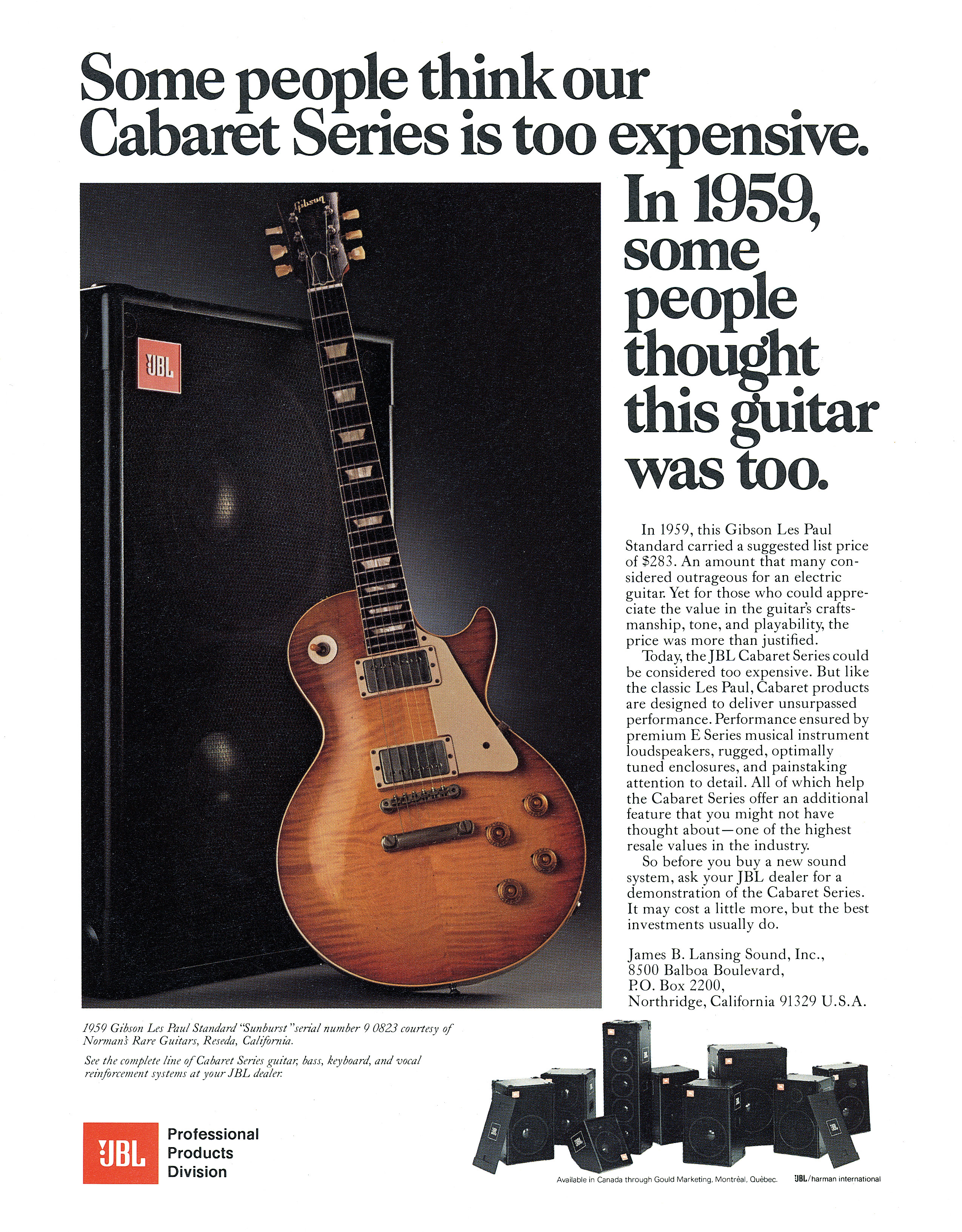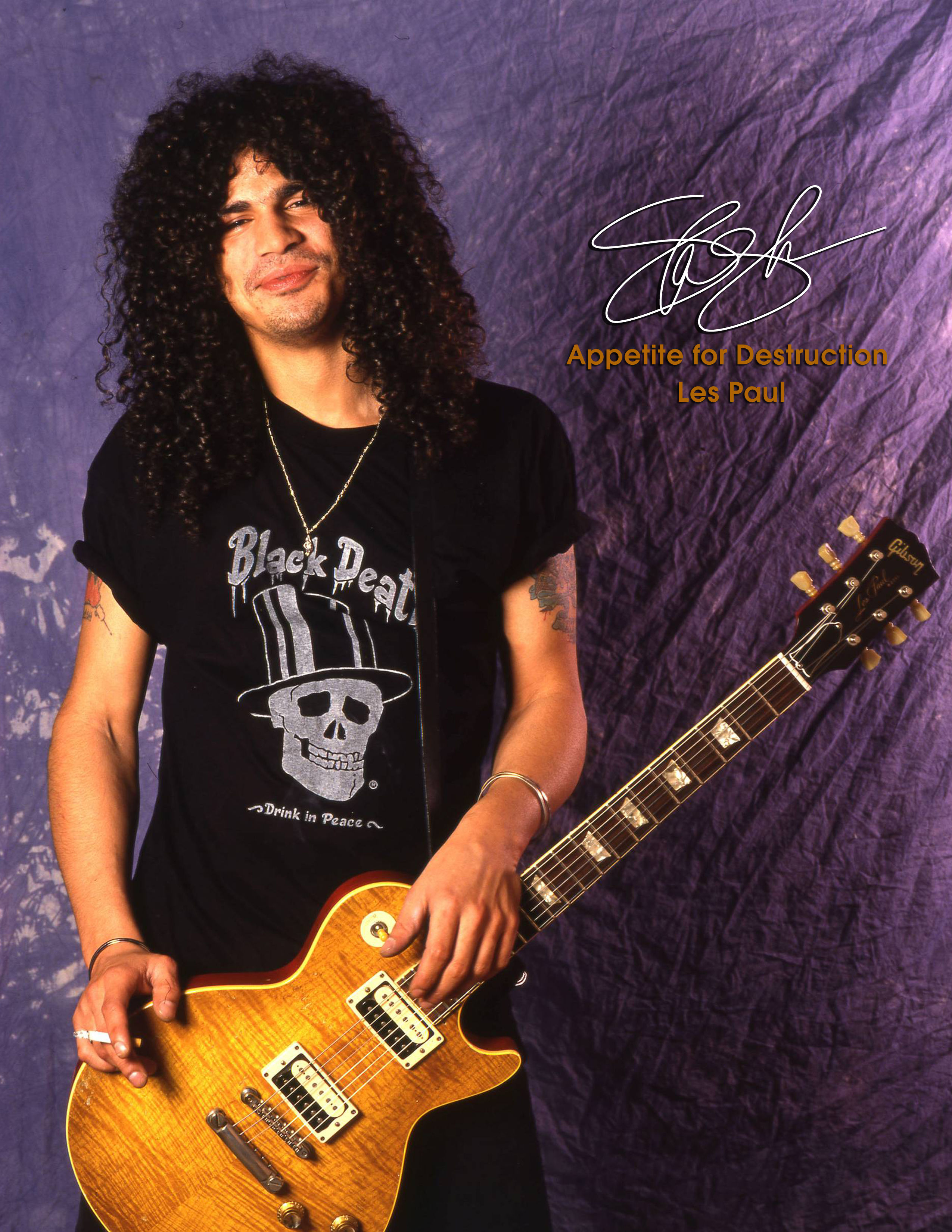If the popularity of a particular type of guitar is measured by its visibility in the hands of famous players, then the '80s should probably be marked down as the least popular decade for the Gibson Les Paul Burst. This is the legendary sunburst model made between 1958 and 1960, the one used by icons such as Eric Clapton, Jimmy Page, and Jeff Beck in earlier decades, and the type that regularly sells for eye-watering sums among today's cognoscenti.
Changes in fashion among guitar players and guitar makers did not help Gibson during the '80s, and some of those key musicians allied to the original Les Paul moved to other models. At a charity benefit show in London in 1983, that trio of icons played together on stage. Jeff played Fender Stratocasters. Eric, too, played a Strat and, for one song, a Gibson Firebird. Jimmy mainly played a Fender Telecaster, although he did use a Burst briefly. A few years later, Jeff and Eric each worked with Fender to develop a signature model.
All told, Gibson had a tough time in the '80s, with sales falling by 30 percent in 1982 alone. The US guitar market was tumbling, and most American brands faced similar woes. Costs were high, economic circumstances and currency fluctuations were against them, and Japanese competitors had an edge.
Since 1980, all the main Gibson production happened at its Nashville plant, while the smaller original Kalamazoo factory now made custom orders, banjos, and mandolins. In 1983, Gibson announced that Kalamazoo would close. The final production was in June '84, and the factory shut down three months later, a little more than 65 years since Gibson erected the original building. In the summer of '85, owner Norlin announced it had found a buyer for Gibson, and in January the following year, Henry Juszkiewicz, David Berryman, and Gary Zebrowski completed their purchase for $5 million.
Aside from those older players' interest in guitars other than Les Pauls, many of the newer high-octane players of the '80s who might otherwise have been naturals for a Lester also turned to something that suited them better. Superstrats dominated the look and feel of rock guitars in the '80s as several brands—among them Kramer and Jackson—developed and revamped the Stratocaster design to suit the needs of extreme-rock players. Traditional designs such as the Les Paul and indeed the Strat took a beating at the hands of the superstrats, especially when the biggest name of the era, Eddie Van Halen, endorsed Kramer's offerings.
Superstrats offered more frets, deeper cutaways, modified pickup layouts, high-performance vibrato systems, and bright graphic finishes. In many ways, they were the antithesis of a Les Paul Burst, and they came to define the mainstream rock guitar of the '80s.
Gibson tried to catch up with its own superstrat-flavored offerings—such as the MV Victory models (1981), Q models (1985), US-1 (1986), U-2/Mach II (1987), and SR-71 (1987)—but while there were some interesting guitars among them, at the time they failed to grab mainstream attention, not least because of a problem that's never been far from the company's door. Some guitarists prefer Gibson to concentrate on old designs from the '50s and '60s, and if it tries to innovate or run with new trends, they consider that as simply too un-Gibson.

There were exceptions, of course. For Burst aficionados, the real thing never went out of fashion, despite the apparent dip in visibility among name players. For believers, it was still the most important guitar in the world.
Joe Walsh, for example. He'd joined the Eagles in time for their massive Hotel California album of 1976, stayed until they disbanded in the early '80s, and would return for various reunions. By the late '80s, Joe still defined his favorite setup as a pair of Fender Super Reverbs and a vintage Les Paul.
This Is Spinal Tap put many of rock's excesses into comical perspective when it first hit cinema screens in 1984, and a backstage scene where Tap guitarist Nigel Tufnel guides the rockumentary host Marty DiBergi through his guitar collection had a special resonance for Burst nuts.
"This is the top of the heap," Nigel tells Marty as he picks up a lovely '59 Burst, adding proudly: "Look at the flame on that one!" The '59 in the Spinal Tap scene was loaned for the movie by vintage dealer Norman's Rare Guitars, and it had appeared a little earlier in a JBL speakers ad.
Toto guitarist and famed session player Steve Lukather has a '59 Burst that served him well throughout his career, and it's known as the Rosanna Burst for its appearance in the video for "Rosanna," a big hit for Toto in 1982. Perhaps its most famous appearance came that same year as The Other Guitar on Michael Jackson's "Beat It." Steve used his Burst for every guitar heard on the track—except Eddie Van Halen's superstrat solo—including the simple, effective bass part, the layered riffs, the rhythm parts, and the backdrop to That Solo.
These and others constituted a few Burst moments that helped the model's aficionados brave the otherwise rather bleak '80s. But among all the decade's shred players lining up for their gleaming new superstrats, it took Guns N' Roses to come along and redefine hard rock—and, no doubt to Gibson's delight, guitarist Slash used a Les Paul to unleash his aggressive, bluesy licks.
Slash was inspired by his heroes Jimmy Page and Joe Perry and the Les Pauls they played. Guns N' Roses began to sell millions of albums, starting with 1987's Appetite For Destruction, and Slash began to assemble a fine guitar collection, with a good showing of vintage Les Pauls. But the ones he used at first were replicas. He'd started out in Guns N' Roses with a B.C. Rich, a Jackson, an SG—but in '85 he got his first good Les Paul, which was built not by Gibson but by Peter "Max" Baranet or by Kris Derrig, depending on which story you believe.
Slash disposed of that guitar, but by summer '86 he needed something to record basic tracks for Appetite. The identity of this second replica is also disputed. Slash said it was a Les Paul made by Derrig. Max Baranet told me it was another of his guitars. "He got my personal 1960 replica directly from me two days before recording sessions started," Max said, "and then a third replica, a Kris Derrig, for two days of overdubs after the album had been recorded."

When Gibson did a deal with Slash soon afterward for two new Les Paul Standards, Slash put away his road-worn replicas. But the irony remains: the guitars that more or less brought the Burst back to mainstream public consciousness weren't made by Gibson. Layering up the irony still further, in 2010 Gibson produced the Slash "Appetite For Destruction" Les Paul. It was a re-creation of a replica.
Meanwhile, Gibson had been tracing the rise of interest in the Burst through the '70s and had come to realize that a modern reissue might be a good idea. The first convincing signs of this were the Heritage Series Standard-80 models, launched in 1980, and Gibson's "Reissue Outfits," effectively an attempt to echo more accurately the old-style Burst and Goldtop, introduced three years later and driven by demand from customers who wanted the features of those hallowed '50s models.
J.T. Riboloff joined Gibson in '87. "When I went there," he told me, "the Les Paul reissue was basically a regular Standard with a flame top. Slowly but surely, they let us get away with a little more." One of J.T.'s early projects was the Les Paul Classic of 1989, which hinted at the features of a '60 Burst, although the pickups were definitely modern.
Thankfully for the Burst, the '80s were over—and a few years later, in 1991, Gibson revised its regular reissue into two models, effectively the Standard '59 Flametop Reissue and the Standard '60 Flametop Reissue. With that move, Gibson's strategy for a series of serious reissue Les Pauls was under way, and the Burst was set to enjoy its split personality as an original high-value collectable and a finely engineered modern re-creation.
About the Author: Tony Bacon writes about musical instruments, musicians, and music. He is a co-founder of Backbeat UK and Jawbone Press. His books include Electric Guitars Design & Invention, Guitars: The Illustrated Encyclopedia, and Sunburst. Tony lives in Bristol, England. More info at tonybacon.co.uk.
